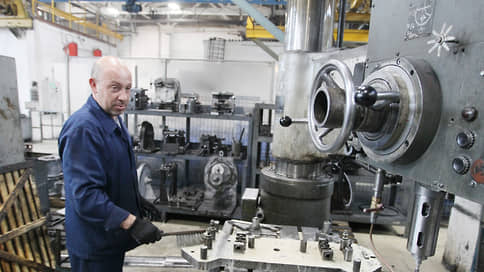The industry does not have time to choose Russian
[ad_1]

The structural restructuring of Russian industry under the pressure of sanctions looks rather problematic in the dynamics of the first half of 2023, data from the Higher School of Economics and the Gaidar Institute show. Basically, we are talking about redistributing the load on existing capacities with a growing shortage of personnel, reducing inventories and switching to Russian rather than Chinese components and equipment. Gains in investment in processing and public administration are offsetting a significant decline in investment in mining and trade.
The past months of industrial restructuring and its future are already better visible in the current economic statistics, and investment analysis shows that this is rather a quick and, perhaps, only an initial adjustment of the Russian economy to the processes caused by a sharp change in the terms of foreign trade (G7 sanctions after the start of Russian military operation in Ukraine). The Gaidar Institute’s July market review and investment data released this week by the Higher School of Economics (CRHSE) Center for Development show how the process looks in practice.
A poll by Sergei Tsukhlo of the Gaidar Institute shows that there are certain limits to the optimism of industrialists, which remains very high. Thus, industrialists state a shortage of stocks of finished products – these are both symptoms of increased demand and the result of the closure of the component and equipment market, stock indicators have been very unstable since the summer of 2022, and the shortage of imported raw materials is slowly growing. In the first half of 2023, the process of replacing imported (mainly Western) components continued: 53% of the surveyed companies made a quick transition to Chinese counterparts in 2022, and since the beginning of 2023, the share in the replacement of Russian counterparts has been steadily growing. In 2022 – 54% of respondents, in 2023 – 68%, the data for the rest changed generally within the margin of error, except for the share of Turkish components – the share of those using them in 2022 was 17%, in 2023 – 7%, however , the use of Iranian, Indian, Vietnamese, Egyptian components is also decreasing – Russian ones, apparently, are more competitive.
The situation with import substitution of equipment looks a little different. Chinese analogues to replace Western equipment are mainstream: according to a survey by the Gaidar Institute, 61% of respondents purchased it (in 2022 – 66%); Russian equipment is being replaced by the sanctioned 45% of respondents (in 2022 there were 38%) – and this looks like the real scale of import substitution in the sector: it is a lot, but it is going very slowly. The “overheating” in industry, which the Bank of Russia constantly mentions, is well confirmed by the Gaidar Institute surveys: capacity shortages have been recorded for two quarters in a row, now, according to the survey, they are used by 78%, the enterprises themselves believe that in theory it is possible without critical risks ( “to melt the table”) to increase to 87% on average in the industry – this is apparently the limit of the possible satisfaction of demand only with recovery investments. However, it is not a fact that it can be achieved at all – despite all the investment optimism, the number of companies that believe that companies do not have enough or, taking into account future expansion, there will not be enough people, now stands at 42%, the Gaidar Institute writes that in 28 There has never been such a shortage of personnel in years of surveys.
The investment survey of the Central Bank of the Higher School of Economics, authored by Valery Mironov and Alexei Kuznetsov, shows in which sectors, in fact, there is an investment surge, which has been confidently demonstrated in Rosstat reports for more than a quarter. The largest investment sectors in the Russian Federation remain mining (22.5% of all investments in the first quarter of 2023, no more recent data), processing (18.3%) and transport (15.6%). If it weren’t for the year-on-year decline in investment in production, the Russian economy would clearly have been in for an investment boom — the sector’s negative contribution to the quarterly increase in investment year-on-year was 8.8%, although in real terms the decline was greater in less “significant” trade sectors (26 .5%), in the leisure infrastructure (22.5%) and the hospitality sector (15.7%). The main real growth was provided by the public administration sector, that is, directly and indirectly, it was mainly military spending (an increase of 92.8%, 0.8% in the total increase).
Metallurgy and mechanical engineering, without the automotive industry and equipment production, were the most confident in increasing investment in processing (22–29% of investment growth), in construction, in fact, there was no increase in investment in the first quarter of 2023. In services, the main growth in investments is in passenger rail transport (54.6%) and in the construction of pipelines (79.4%). It is unlikely that this picture can be the final restructuring of the industry – rather, we are talking about a stable, but temporary structure.
[ad_2]
Source link






